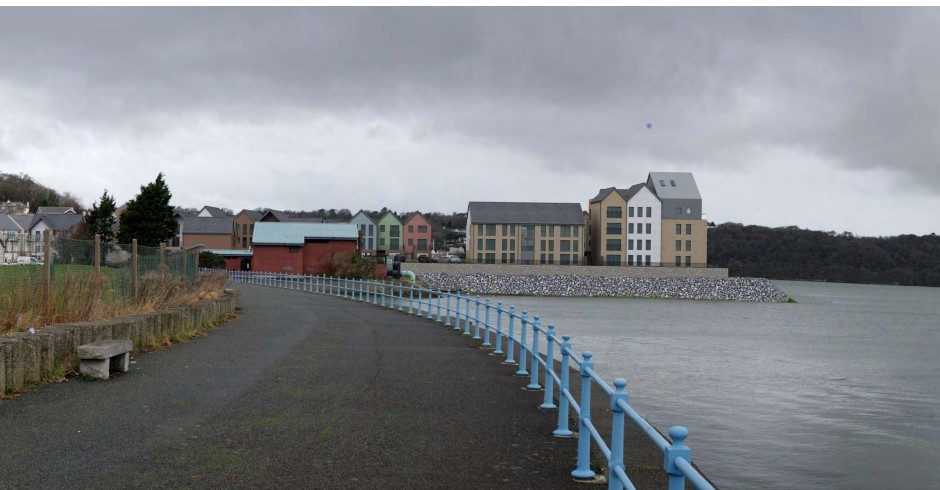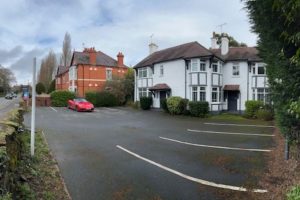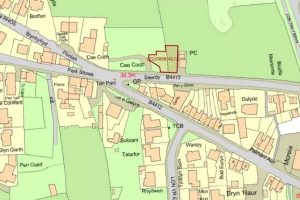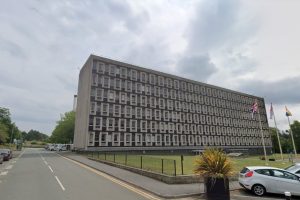The SECOND phase of a controversial Bangor waterfront housing development will come become before Gwynedd planners.
The proposal for 55 residential units to be built on the former Dickies boat yard site was first submitted to Cyngor Gwynedd five years ago.
The planning application was put before planners in March 2018, but the time limit on the scheme was extended until March 31, 2023.
The proposals were submitted by Ms Claire Droog of the Watkin Jones Group.
They describe a mix of housing types, including two, three and four storey buildings, and a mix of three and four bedroom homes, and two and three bedroom apartments.
They would also include creation of a new vehicular access, estate roads, associated paths, parking spaces and landscaping.
The applicants stated they were “committed to providing a number of affordable units within the development”.
Cyngor Gwynedd officers have recommended the planning committee refuse the Hirael application, when they next meet on March 20.
When it was first mooted, the plans prompted hundreds of local people to sign a petition and attend public meetings opposing the Beach Road scheme.
The city council had considered the development “too large, too high and unacceptable”, and an “over-development”, and Bangor Civic Society had objected to a “flawed” plan.
Public concerns reported to local councillors included worries over alleged contaminated building rubble on the site, impact on wading birds and the presence of Japanese knotweed.
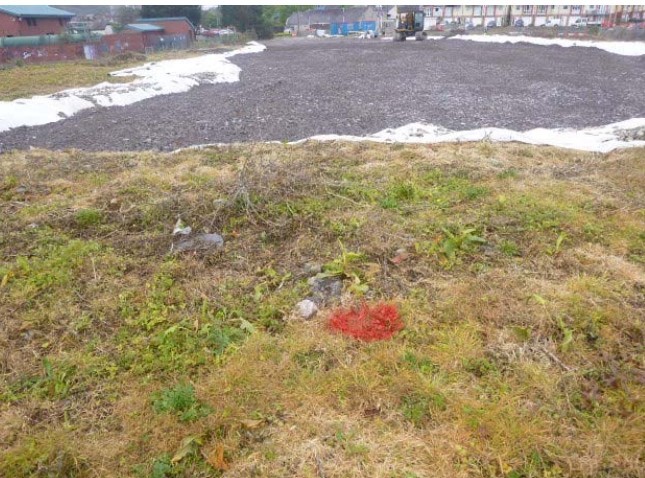
But the developers claimed that the homes would have a “notably positive effect on the city”.
They would provide “the opportunity to comprehensively redevelop an important, under-utilised brown-field site” and deliver a “high quality landmark development”.
A report by the applicant into a proposed Japanese knotweed strategy said the weed comprised “of less than 5% volume of a cubic metre of soil”.
It noted: “The client intends to build up to 50 properties on the site, and requires all viable Japanese knotweed material to be removed off-site allowing the development works to commence unrestricted.
“Japanese Knotweed Control has surveyed the location and recommended that the removal of the infestation using an excavation programme with the waste material transported to a licensed landfill tip for disposal.”
But the council planning officers’ report states that “contrary to policy”, it had “not been demonstrated” that the Japanese knotweed could be “effectively eradicated” in a manner that ensures that the development would not have “an unacceptable adverse impact upon health, safety or amenity of occupiers of local residences, or other forms of pollution”.
There were also reports into the visual impact of the development, effect on local residents, the heritage of the area, the coastal site, wildlife and environment.
The site is located within the settlement of Garth, south of Bangor Pier, with views across the Menai Strait to Beaumaris.
It comprised of reclaimed land on the Port Penrhyn foreshore and formed part of a larger brownfield site, which had long seen historic industrial and commercial use.
The site area was last used as a builder’s compound and temporary repository for material derived during excavation work associated with Phase 1 of the Watkin Jones, Y Bae, residential development.



